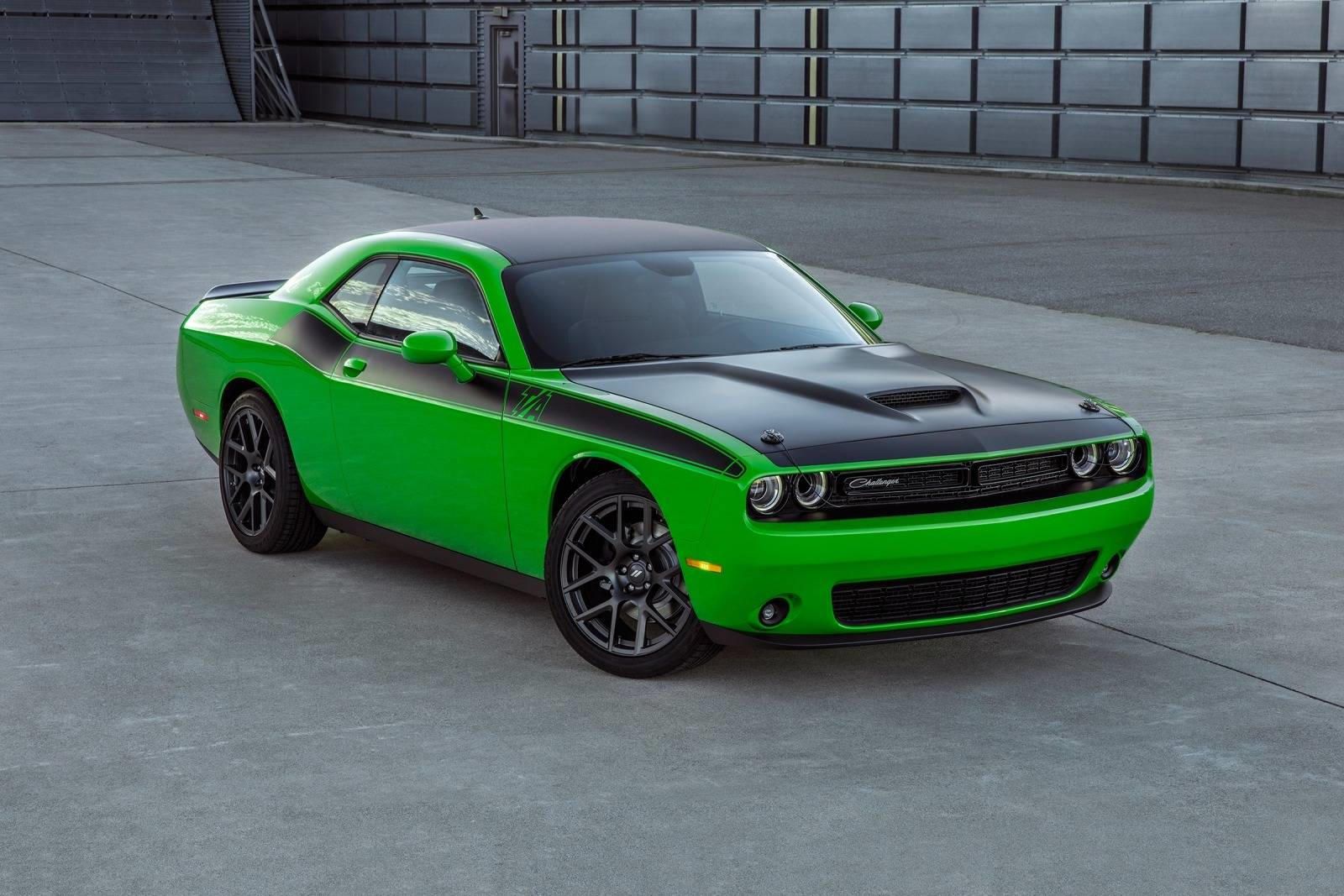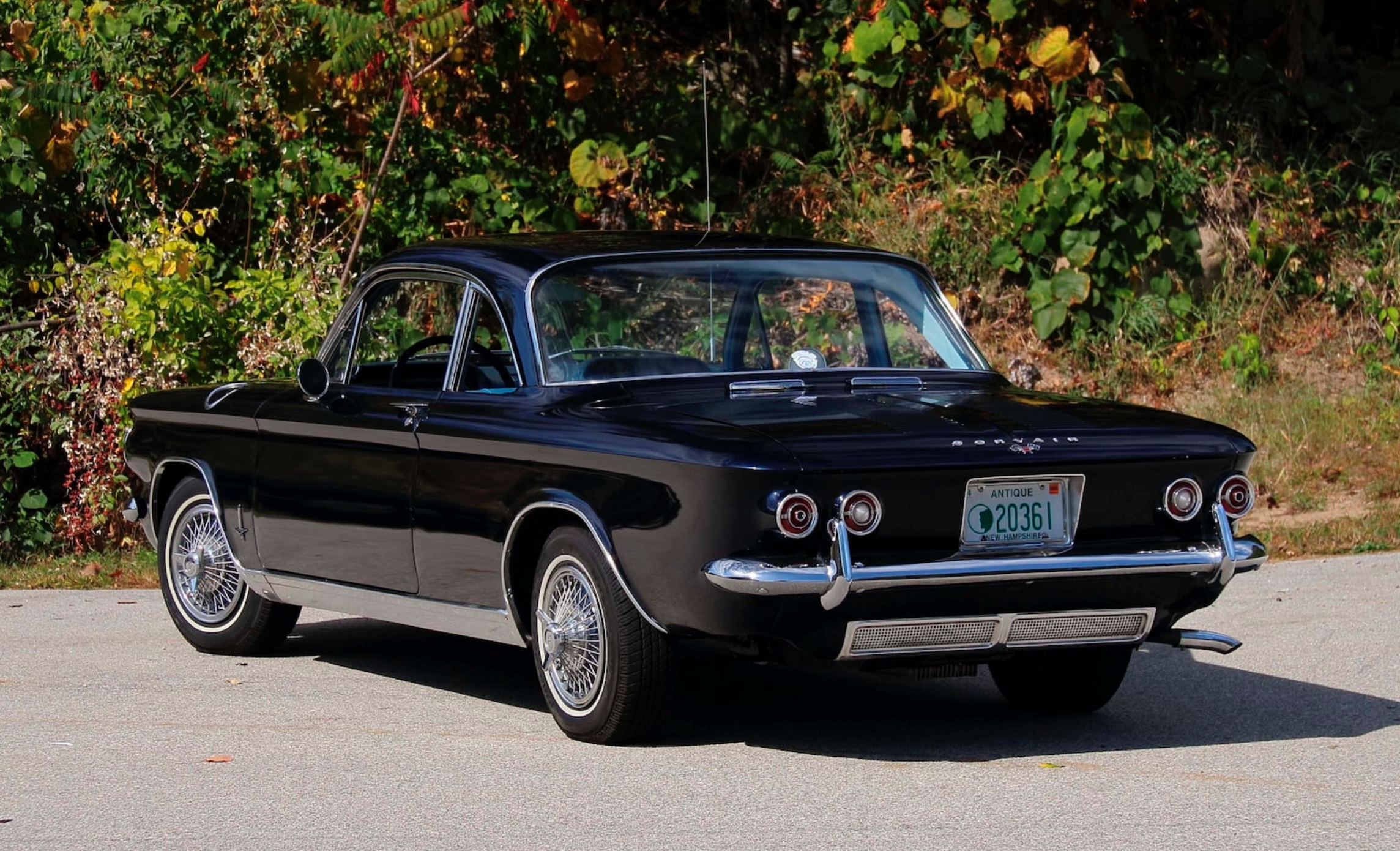
American cars have a long history of having the engine at the front, preferably as large as possible, and the drive going to the rear. American companies have sometimes strayed off the beaten track, but it has rarely paid off for the domestic market until America found itself in a fuel crisis in the 1970s. However, some cars presented to the public have defied the conventions American car buyers have typically wanted from an American brand. These are some of those cars.
Chevrolet Corvair
In the 1950s, Chevrolet was one of the most conservative automotive brands in America. At the tail end of the 1950s, the Big Three (Ford, General Motors, Chrysler) launched compact cars, but they were scaled-down versions of existing vehicles. Chevrolet, however, took a look at what the Europeans had been doing and ignored the American brand rulebook completely. The result was the air-cooled rear-engine-powered Corvair, and it wasn't a little four-cylinder engine in the back like a Beetle; it was a six-cylinder boxer engine like in a Porsche. Chevy's performance car came in various body styles over the years, including as a station wagon and a van, but the piece de resistance was the two-door turbocharged Corvair with the "Spyder" engine. Chevrolet may have been looking at Porsche when it designed the Corvair, but it beat Porsche to the turbocharged air-cooled boxer engine by 15 years. The first Corvairs rolled off the line with 80 horsepower. By 1996 you could option the "Corsa" turbocharged engine to make 180 hp.
The Ford Mustang overshadowed the creative and well-engineered high-performance Corvair after a hungry not-yet-politician called Ralph Nader named the Corvair in the opening chapter of his headline-grabbing book, Unsafe At Any Speed. To be fair, his evaluation wasn't necessarily wrong, it was just a touch exaggerated.
Pontiac Fiero
For most of American automotive history, mid-engined cars have mostly been limited to race cars, small volume manufacturers, and concepts. The word affordable had crept in just once before the Corvette finally went mid-engined for its eighth generation. In the early 1980s, the Pontiac Fiero became the first mass-produced mid-engine sports car from an American manufacturer. Everything about the Fiero was aimed at the enthusiast, from its engine placement to the pop-up headlights. It was innovative as well, with composite body panels, a plastic body on a spaceframe chassis, and headrest-mounted speakers. It went toe-to-toe with Toyota's MR2. However, the MR2 didn't have a reputation for bursting into flames. In 1984, 20 fires were being recorded per month on average. With hot oil dripping onto manifolds when connecting rods broke, other problems paled into insignificance. Production ceased in 1988 with 370,168 built.
Saturn Sky
When asked to name a 21st-century pure American roadster, most people will draw a blank. Some enthusiasts will come up with the Pontiac Solstice or Dodge Viper, forgetting they were both also available as coupes. The answer we are looking for is the Pontiac Solstice's brother: The Saturn Sky. The ragtop came with a choice of four-cylinder engines making either 177 hp or a turbocharged version making 260 hp. On top of that, there was a dealer-installed 'turbo upgrade' bringing output up to 290 hp. It was a fantastic idea in 2007 to produce an exciting American roadster to bridge the gap between the Mazda MX-5 and BMW Z4 or Mercedes SLK. America didn't care for either the Solstice or the Sky, though. Both were killed off when GM closed its Wilmington Assembly plant in 2009.
Plymouth Prowler
There was another pure American roadster available in the 21st century, and it was grandfathered in the 1990s. The Plymouth Prowler (later the Chrysler Prowler was in production from 1997 to 2002, which is longer than you would expect looking at it. It was a result of Chrysler letting its designers loose to build a retro sportster or hot rod-style car. It first showed up as a concept car in 1993 before Plymouth surprised everyone and actually built it. Chrysler got some pushback for not putting a V8 in the Prowler, but it was lightweight due to its aluminum-based chassis and use of adhesive bonding. Initially, its 3.5-liter V6 propelled the Prowler to 60 mph in 7.2 seconds, but an upgrade from 214 hp to 253 hp in 1999 shrank its 0-60 to 5.9 seconds.
Vector W8
It's curious that America doesn't have a supercar manufacturer to go up against the Europeans. We can discuss the C8 Corvette in the comments, but the reality is that there's no answer to Lamborghini, Ferrari, or McLaren here. Vector tried and failed, demonstrating just how hard it is to get a new company specializing in supercars is to get off the ground. The W8 had all the ingredients of a true supercar, including a mid-mounted race-derived V8 engine and the trope of jet fighter-inspired design. From 1989 to 1993, just 22 were built for sale. Car & Driver couldn't get one to work for long enough to test while MotorTrend was luckier and gave it a positive review, but it remains little more than a footnote in American automotive history.
GMC Syclone
GMC did something spectacular in 1991 with its compact Sonoma pickup truck. Nobody asked for it, and nobody needed it, but 2,998 people bought the high-performance pickup. At the time, it was the fastest truck produced with its turbocharged six-cylinder engine propelling it to 60 mph in a scant 4.3 seconds, which is still quick today. Famously, Car & Driver compared it to a Ferrari 348 ts, but it wasn't just straight-line speed where the Cyclone excelled. It was also all-wheel-drive and the first to sell with a and all-wheel anti-lock brake system.
Dodge Challenger SXT and GT AWD
The generally accepted definition of a muscle car is a large rear-wheel-drive coupe with a V8 engine built to go fast in a straight line and not worry too much about corners. The last of the mass-produced muscle cars is the Dodge Challenger, and it comes in a variety of flavors from just a good-looking coupe to an outright drag strip monster. However, the Challenger GT and SXT suddenly had all-wheel drive (AWD) as an option to go with the base 3.6-liter V6 engine. It still strikes us a strange decision to add the weight of an all-wheel-drive system to an already heavy car with its weakest engine option. However, if you're a fan of the muscle car look but have to live with a lot of snow and don't want to buy a Subaru, Dodge has you covered.
Dodge Neon ACR
The Dodge Neon was America's answer to the Japanese econoboxes of the time and did a great job of it. It was a great little family car, so the turbocharged Neon SRT4 was a revelation to many in the 2000s, but those that raced in autocross knew the Neon was a little wonder already. So did Dodge, and that's why it created a factory-built race ACR (American Club Racer) version of the Neon in the 1990s that, initially, was only sold to Sports Car Club of America (SCCA) members. The sedan Neon ACR came with a single overhead cam four-cylinder engine making 130 hp, but the coupe got a dual-overhead cam engine making 150 hp. The Neon ACR's suspension was upgraded and a lot stiffer, the brakes didn't have ABS, the steering was quicker, the five-speed manual transmission had a shorter ratio, and air conditioning and a stereo were optional. The beauty was in its affordability, and its $12,515 price tag would be around $21,000 now.

